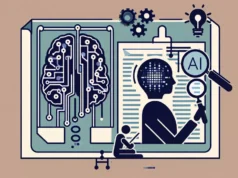In an increasingly digitized world, where data-driven algorithms silently govern a colossal portion of our lives, the subdued whispers of alarm about ‘algorithmic bias’ are now escalating into a clamor of serious concern. As conversations around Artificial Intelligence (AI) and machine learning gain momentum, the issue of algorithmic discrimination has become a focus for lawmakers, researchers, industry leaders, and activists worldwide.
Algorithmic bias refers to systematic and unjust errors ingrained in the automated decisions made by AI. These biases can stealthily infiltrate all aspects of life from Google search engine results and Facebook news feeds, to job applications and housing advertisements, police surveillance and court sentencing, perpetuating and even aggravating existing societal prejudices.
Recent years have seen an uptake in public incidents involving technology companies accused of algorithmic bias. In 2019, Apple drew criticism as it was revealed that the Apple Card, managed by Goldman Sachs, seemed to offer higher credit limits to men than women with the same financial circumstances. Industry behemoth Amazon also faced backlash when it was found that their AI recruiting tool had an inherent bias against women, leading to the system’s decommissioning.
Just last month, Twitter was embroiled in controversy when a bias in its machine-learning algorithm, meant to automatically crop images to highlight focal points, was found to be selectively focusing on white people over individuals of color. Likewise, earlier this year, Google’s popular photo app was left red-faced after it labeled a photo of two black people as “gorillas”.
Incidents like these have sparked international debates about the ethical and societal responsibilities of technology corporations in shaping AI systems. However, looking beyond the technological giants, the more significant concern lies in the profound implications of these biases on the broader population.
An AI system is only as unbiased as the data set fed into it. If the data has racial, gender, age, or any other form of bias built into it, the AI will inadvertently perpetuate these biases in its decision-making. Without rigorous scrutiny, the implications can have far-reaching consequences, particularly in areas such as employment, finance, healthcare, and law enforcement.
A practical example can be seen in mortgage-lending practices, where an AI might analyze historical data and reject a loan application from a certain zip code, not because of the applicant’s creditworthiness but merely due to the physical location of properties. This mirrors the historically unfair practice known as ‘redlining’ where minority neighborhoods were denied loans and other services.
In a similar vein, ‘predictive policing’ may lead to racial profiling, wherein data about previous arrests could bias an algorithm to target certain demographics, leading to a vicious cycle of over-policing predominantly Black and Brown neighborhoods.
These instances shine a light on the immense threat that biased algorithms pose to the basic tenets of equal opportunities and justice.
There is an immediate need among the tech industry, regulators, and society alike to safeguard against algorithmic bias. One proposed solution is to improve the design and review process for AI algorithms, with an emphasis on transparency and disclosure, combined with routine audits.
Additionally, tech organizations must reassess how they hire and retain talent. A diverse workforce will bring diverse perspectives to avoid biased design and implementation of algorithms.
Ultimately, recognizing and rectifying algorithmic bias in AI systems is not just a technological issue but a societal one. Nipping it in the bud is vital to ensure fair representation and equal opportunity in the burgeoning digital universe.
However, it remains to be seen whether the tech industry and regulators can come together to tackle this complex issue effectively before untamed algorithmic biases trick us into sleepwalking into a future society where discrimination is inadvertently amplified on an unprecedented scale.
Sources:
– Obermeyer Z., Powers B., Vogeli C., Mullainathan S. (2019) “Dissecting racial bias in an algorithm used to manage the health of populations”. Science, 366(6464): 447-453.
– Goodman B., Flaxman S. (2016) “European Union regulations on algorithmic decision-making and a” right to explanation””. AI Magazine, 38(3): 50-57.
– Gibney, E. (2016) “Google’s image recognition software is speechless over a simple racist slur,” Nature News.
– Singh, A. (2019) “Exclusive: Amazon scraps its AI recruiting tool that showed bias against women”, Reuters.
– Bhuiyan, Z. (2019) “Apple is offering a new credit card with Goldman Sachs. Critics say its design could reinforce gender discrimination.”, Vox.
– Watson, T. (2019) “Twitter: High likelihood that our AI sometimes racially discriminates”, Fortune.
– The Artificial Intelligence Video Interview Act, HB2557 Enacted. (2019) State of Illinois 101st General Assembly.






